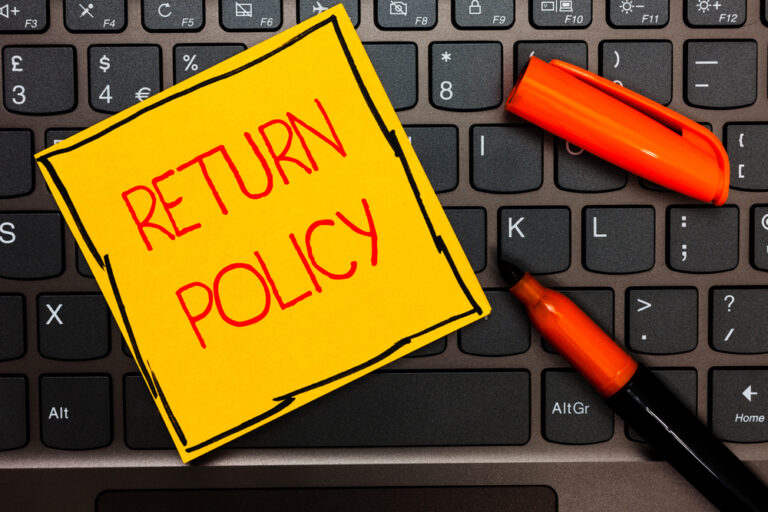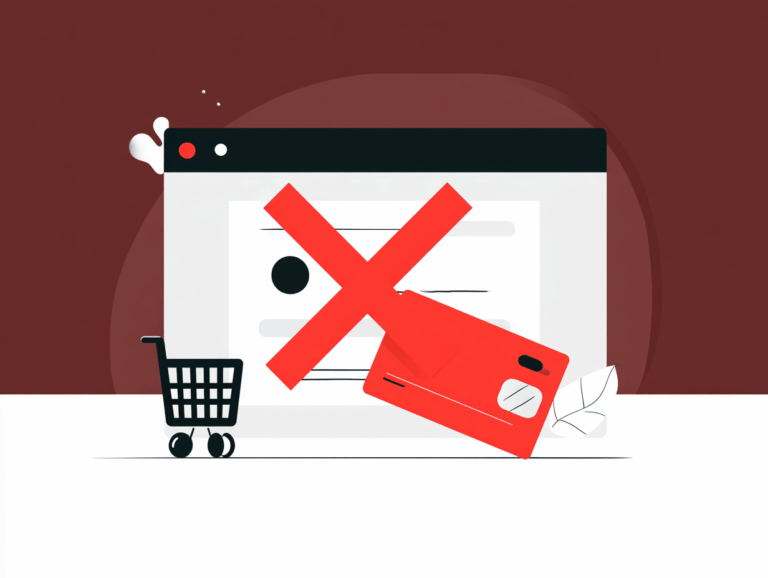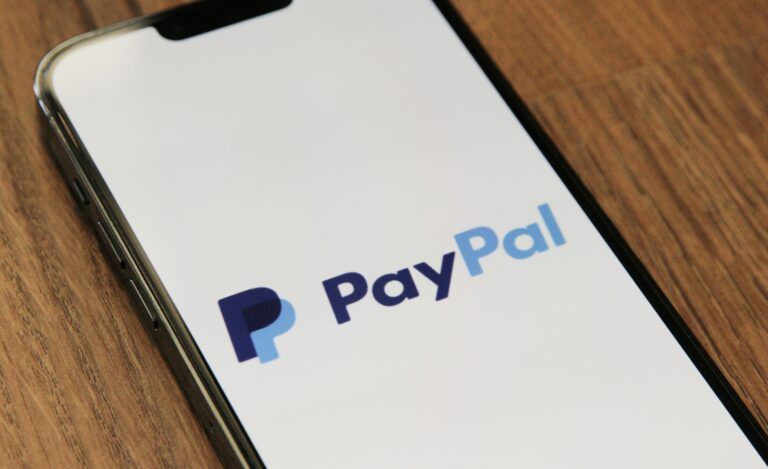Abandoned customer carts are a common problem for ecommerce businesses, with an average cart abandonment rate of 69.57% across all industries.
When potential customers add items to their cart but leave without completing the purchase, it represents a significant loss of potential revenue. However, abandoned cart emails can be a powerful tool to recover these lost sales.
STOP LOSING SALES, START MASTERING THE CART
No Email, No Sale
Sending cart abandonment emails is not just a good idea—it’s a necessity for any ecommerce business looking to maximize its revenue potential. When a potential customer takes the time to browse your online store, select products, and add them to their cart, they’re demonstrating a clear interest in what you have to offer. However, for various reasons, many of these potential customers will leave without completing their purchase.
This is where abandoned cart email marketing come in. By reaching out to these individuals with a timely, well-crafted email, you can remind them of their interest, encourage them to return to your site, and ultimately convert that abandoned cart into a successful sale.
The numbers speak for themselves. According to recent studies, businesses that actively send abandoned cart emails recover between 3% and 14% of otherwise lost sales. This means that if you’re not sending these emails, you’re essentially leaving money on the table.
Moreover, the revenue generated from each abandoned cart email is significant. On average, businesses see a revenue of $5.81 per recipient. While this may not seem like a huge amount on an individual basis, it quickly adds up when you consider the volume of abandoned carts most ecommerce sites experience.
Securing Email Addresses for Abandoned Carts
To launch a successful abandoned cart email campaign, the first step is to obtain the email addresses of potential customers who have left items in their carts without completing the purchase.
Fortunately, there are several effective strategies you can employ to capture email addresses and set the stage for your abandoned cart email sequence.
Require an Email Address Early in the Checkout Process
One of the most straightforward ways to secure email addresses is to make it a required field early in your checkout process. By asking for an email address upfront, you ensure that you have a means of contacting the customer even if they abandon their cart later on.
To implement this marketing strategy effectively:
– Place the email field prominently on the first page of your checkout process
– Make it clear that an email address is required to proceed with the purchase
– Consider using microcopy to explain why you need the email address (e.g., “We’ll use this to send you an order confirmation and shipping updates”)
Offer Incentives for Providing an Email Address
Another approach is to offer incentives to encourage potential customers to provide their email addresses willingly. By offering something of value in exchange for their contact information, you can increase the likelihood that they’ll complete the checkout page process and make a purchase.
Some incentive ideas include:
– A coupon code for a percentage off their first order
– Shipping costs are nixed on their current order
– Access to exclusive content or resources related to their interests
Be sure to clearly communicate the incentive and make it easy for customers to redeem it once they’ve provided their email address.
Use Exit-Intent Popups to Capture Email Addresses
Exit-intent popups are designed to detect when a visitor is about to leave your site and display a targeted message to encourage them to stay. By using exit-intent popups strategically, you can capture email addresses from potential customers who are abandoning their carts.
To make the most of exit-intent popups:
– Design an eye-catching popup that clearly communicates the benefit of providing an email address
– Offer a compelling incentive, such as a discount code or free shipping
– Make the email field prominent and easy to fill out
– Include a strong call-to-action (CTA) that encourages visitors to submit their email addresses
STAY COMPLIANT TO KEEP YOUR BUSINESS RUNNING
Bare Minimum Abandoned Cart Emails
You need to send at least one abandoned cart email—that’s the bare minimum. This initial marketing email should be sent within a few hours of the cart abandonment, while the customer’s interest is still fresh. The goal is to remind them of the items they left behind and encourage them to complete their purchase.
To create an effective abandoned cart email:
-Start by clearly reminding the customer of the specific items they added to their cart.
-Include high-quality product images of each product along with their names, prices, and any relevant options (such as size or color).
-Make it easy for the customer to return to their cart and complete the purchase by including prominent links to the abandoned products. These links should direct them straight to the relevant product pages, where they can review the items and add them back to their online shopping cart with minimal effort.
-Arguably the most important element of your abandoned cart email strategy is a clear, compelling call-to-action (CTA). Your CTA should stand out visually and use action-oriented language to encourage the customer to click through and complete their purchase. Examples of effective CTAs include “Complete Your Purchase,” “Finish Checking Out,” or “Buy Now.”
-Finally, don’t forget to offer customer support in your abandoned cart email. Recognize that some customers may have abandoned their carts due to questions, concerns, or technical issues. By providing a means of contacting your support team (such as an email address or phone number) or prominently displaying your return policy, you demonstrate your commitment to helping them complete their purchase and fostering a positive customer experience.
Abandoned Cart Email Sequence Example
While sending a single abandoned cart email can be effective, a series of emails that are well-timed and strategically crafted often yields even better results. By reaching out to potential customers multiple times, you increase the chances of convincing them to return to your site and complete their purchase. The best part is marketing automation allows you to set up and send automated emails from most site manager software, payment gateways, or CRMs.
Here’s an example of a three-email sequence that can help you recover abandoned carts.
Email 1: Gentle Reminder (2-4 hours after abandonment)
Send the first email in your sequence within 2-4 hours of the shopping cart abandonment. This email should serve as a gentle cart reminder, focusing on the items the customer left behind.
– Craft a friendly, non-pushy email subject line that mentions the abandoned shopping cart
– Include high-quality visuals of the abandoned products
– Provide a clear call-to-action (CTA) button that directs the customer back to their cart
– Offer customer support in case they have any questions or concerns
Email 2: Follow-Up with Urgency (24 hours after abandonment)
If the customer hasn’t completed their purchase after the first email, send a follow-up email approximately 24 hours after the abandonment. This second email should create a sense of urgency while still maintaining a helpful, customer-centric tone.
– Use a subject line that conveys urgency, such as “Your cart is about to expire”
– Remind the customer of the specific items they left in their cart
– Include a clear CTA button that encourages them to complete their purchase
– Consider offering a small discount or incentive to nudge them towards conversion
Email 3: Final Reminder with Incentive (48-72 hours after abandonment)
If the customer still hasn’t completed their purchase, send a final reminder email 48-72 hours after the abandonment. This email should include a stronger incentive and emphasize that the offer is time-sensitive.
– Craft a subject line that highlights the special offer, such as “Last chance: 20% off your abandoned cart items”
– Remind the customer of the products they left behind
– Clearly showcase the discount or incentive you’re offering
– Include a prominent CTA button that encourages them to take action
– Stress that the offer is only available for a limited time to create a sense of urgency
AUTOMATE YOUR EMAIL SEQUENCES WITHIN THE GATEWAY OR CRM
Don’t Sound Desperate!
When crafting your abandoned cart emails, you need to strike the right balance between encouraging customers to complete their purchases and maintaining your brand’s integrity. You want to convey a sense of urgency and value without coming across as desperate or pushy.
One effective approach is to align your brand values with the customer’s values based on the contents of their abandoned cart. For example, if a customer has left eco-friendly products in their cart, emphasize your brand’s commitment to sustainability and environmental responsibility.
Another way to avoid sounding desperate is to offer a unique, time-sensitive discount code. This provides a compelling incentive for the customer to complete their purchase while also creating a sense of exclusivity and urgency. However, be cautious not to overuse this tactic, as it can devalue your products and train customers to always expect discounts.
When writing your email copy, use friendly, conversational language that focuses on the benefits of the products rather than simply pushing for a sale. Highlight how the products can improve the customer’s life or solve a specific problem they may be facing.
Finally, aim to provide value in your cart recovery emails beyond just promoting the abandoned items. Consider including personalized product recommendations based on the customer’s browsing history, showcasing social proof or customer reviews and testimonials, or linking to helpful content related to the products (such as blog posts or how-to guides).









